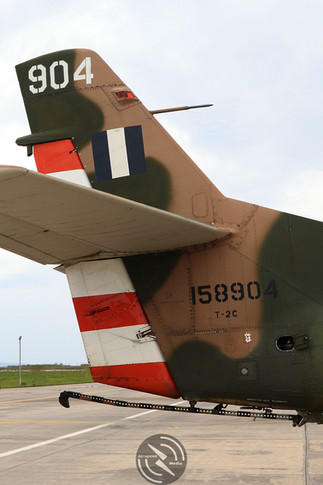Pilot training in Greece - Kalamata Air Base
- Mike Lintott-Danks
- Apr 5, 2019
- 3 min read
Located in the Peloponnese area of mainland Greece, Kalamata Air Base is home to the 120 Air Training Wing with their mix of Beechcraft T-6 Texan IIs and Rockwell T-2 Buckeyes.
The 120 ATW was established in 1970 with the T-33 Shooting Stars. In January 1971 the T-37 B/C Tweets were delivered and in 1976 the T-2 E/C Buckeyes, which replaced the T-33A. In the same year, in August, the 120 Air Training Group was renamed to 120 Air Training Wing. In August 2000, the T-37 B/C were replaced by the T-6A Texan IIs.

The squadron was formed in September 1963 at the 112 Combat Wing (112 CW) with T-37 B/Cs as the 360 Jet Training Squadron (JTS). In 1971 it was relocated to Kalamata airport and in 1974 was renamed to 361 Basic Training Squadron. In summer 2000 the T-37 B/Cs were replaced by the T-6A Texan IIs. Since March 2006 the squadron is named 361 Air Training Squadron.

The squadron was formed in 1957 at the 112 Combat Wing (112 CW) with T-33As and was named the 361 Aircraft Training Squadron. In 1962 it redeployed to the 114 CW and in 1970 moved to Kalamata airport. In 1974 it was renamed to 362 Advanced Training Squadron and in 1976 the T-33As were replaced by the T-2E Buckeye. In March 2006 it was renamed to 362 Air Training Squadron.

It was established in 1972 at the 110 CW with F-84F aircraft and was named 361 Air Training Flight. In 1974 the squadron was modernized with the T-2E Buckeye aircraft and redeployed at Kalamata. Since March 2006 it was named 363 Air Training Squadron.

364 MEA was established in March 2006 and uses the T-6A Texan IIs for the Cadet’s initial and basic training phase.
The visit to the 120 ATW started with the visiting the flight line and maintenance hangers for the 362 and 363 MEA. The T-2 Buckeye was designed as a jet trainer for the US Navy being fitted as standard with an arrestor hook, which is still on the Hellenic Air Force T-2C/Es. This along with the widespread landing gear and an airframe that can withstand the harder landings, that can occur during training, makes it an ideal jet trainer. The C/E models are upgrades from the original A/Bs but these are beginning to show their age with less avionic commonality for the pilots who train on them, to their future mounts of either the F-4 Phantom II, F-16 Fighting Falcon or the Mirage 2000.The T-2 Buckeye still manages to provide good training outside of the cockpit due to its flying characteristics including low stall speed, control response and good stability.
The Buckeye provides the second part of training for new pilots after their time on the Texan II. Once they have completed their hours on this jet trainer, they move onto either a fast jet, transport or helicopter squadron.
The 361 and 364 MEA are situated at the northern end of Kalamata AB. The T-6 Texan II was first flown by the Hellenic Air Force since the year 2000 and they still have all 45 aircraft available for training (25 T-6A and 20 T-6A NTAs). To aid with maintenance and to protect the cockpit avionics from the searing Greek summer temperatures the aircraft mainly operate from sun sheds which were erected in 2014. The squadrons provide onward basic training after the student pilots come to Kalamata from flying the Cessna T-41 at Tatoi Air Base. This training involves a number of simulator flights and up to 110 hours flying on the T-6 Texan II.
‘The Model 3000/T-6 is a low-wing cantilever monoplane with enclosed tandem seating for two. It is powered by single Pratt & Witney Canada PT6A-68 turboprop engine in tractor configuration with a four-bladed, constant-speed propeller and has a retractable tricycle landing gear. The aircraft is fitted with Martin – Baker Mark 16 ejection seats and a canopy fracturing system.’ Wikipedia 2019. The T-6A Texan II was based on the Pilatus PC-9 with modifications to fit the specifications for the USAF, US Navy and the Hellenic Air Force. The HAF also operate the T-6A NTA. There are 20 of these armed versions of the T-6A operated by the HAF. T-6A NTA has the capability to carry rocket pods, gun pods, external fuel tanks, and bombs thus allowing advanced training on the T-6A NTA before moving onto the T-2 Buckeye.
Thank you to both the British Embassy and the Hellenic Air Force for the chance to see the training aircraft and the last flying T-2 Buckeyes in the world.
British Embassy Athens - C. makropoulo
Kalamata AB - Commander Brig. Gen. Petalas, Lt. Col. Kampanarakis and CMASGT Giannopoulos








































































Comments